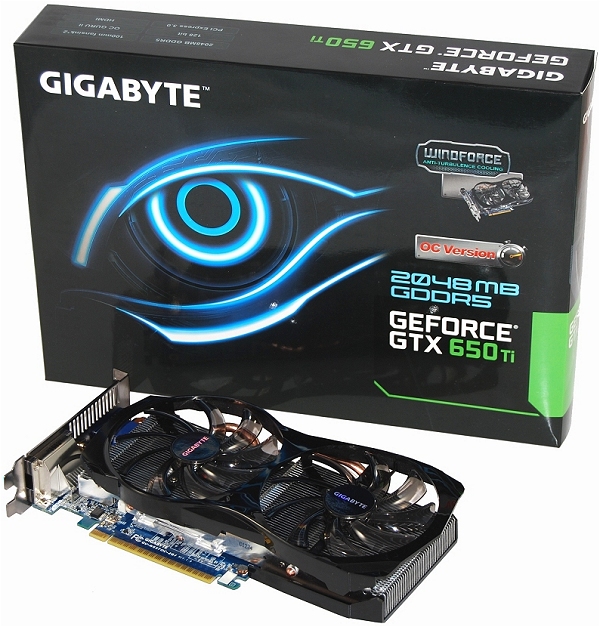It's been over six months since Nvidia launched its Kepler architecture and we've finally seen the GTX 600 series enter more affordable price brackets, delivering a greater value every step of the way. In August, the company shipped its GK104-based GeForce GTX 660 Ti for $300, which was about 13% slower than the $400 GTX 670 while being roughly 33% cheaper – an unmatched performance-to- price ratio at the time.
We watched a rerun of that episode only a few short weeks later when Nvidia elbowed its way into the sub-$300 market. The company's GK106-based GTX 660 launched at $230, landing right between AMD's mid-range offerings. In addition to being only 14% slower and 23% cheaper than the GTX 660 Ti, the GTX 660 offered more value than the Radeon HD 7870 while matching the 7850's price-to-performance ratio.
Having attacked the mid-range and upper-end markets, Nvidia has its sights set on the sub-$200 range, unleashing its GTX 650 Ti. At $150, the new arrival is roughly 34% cheaper than last month's GTX 660 and about 7% pricier than the Radeon HD 7770, which fetches around $140 depending on features and rebates.

Interestingly, the GTX 650 Ti is based on the same GK106 architecture as last month's GTX 660, though the GPU in the former has been significantly downgraded. The GTX 650 Ti features one less SMX Unit, which results in 20% less CUDA Cores. In addition, it has 20% less TMUs, 33% less ROPs, and its memory bus has been cut from 192-bit to 128-bit, reducing the memory bandwidth 40% from 144.2GB/s to 86.4GB/s.
These drastic reductions have led many to question whether the GTX 650 Ti will actually be worth $150 because the sub-$200 market is still heavily populated with many competent previous-generation cards. If the new arrival flops, it will be the first disappointment of Nvidia's Kepler lineup and to some degree, it will help secure AMD's footing in the budget territory. Let's see if the GTX 650 Ti sinks or swims...
Gigabyte GTX 650 Ti in Detail
Nvidia has provided pictures of the GTX 650 Ti reference board, which appears to be no longer than a PCI Express x16 slot and requires a single 6-pin PCIe power connector. What we have on hand, however, is quite different. Although the PCB of Gigabyte's GeForce GTX 650 Ti (N65TOC-2GI) is also very short, its dual slot cooler pushes the card's total length to 23.5cm, which is only slightly shorter than the GTX 660 Ti.


The GTX 650 Ti's GPU has 768 CUDA cores (192 less than the GTX 660) meaning there are 4 SMX Units, the TAU count has been cut from the GTX 660's 80 to 64, while the ROPs have been reduced from 24 to just 16.
The memory subsystem has also been downgraded compared to the GTX 660, which featured three 64-bit controllers for a 192-bit-wide bus. The GTX 650 Ti drops one controller, resulting in a 128-bit-wide bus.

Additionally, Nvidia's specification sees the memory capacity halved from 2048MB to 1024MB, though Gigabyte has still outfitted its GTX 650 Ti with 2048MB of memory, which is clocked at Nvidia's specified 1350MHz (5400MHz DDR) and therefore falls in line with the company's spec for memory bandwidth at 86.4GB/s.

Nvidia's spec for the base clock frequency is 925MHz, while boost clock has been disabled for the GTX 650 Ti. Gigabyte has overclocked the base clock to 1032MHz, a 12% increase over the standard clock speed.
What makes Gigabyte's iteration unique is its WindForce 2X cooler, which employs dual 75mm ultra quiet PWM fans connected to a custom shroud. Under these fans is a massive heatsink that measures 20.5cm long, 8cm wide and 1.5cm at its thickest. It also uses two 6mm-thick heatpipes for heat dissipation.

To feed the card enough juice, Nvidia calls for one 6-pin PCI Express power connector – identical to the HD 7850 and 7770. Nvidia also says those wishing to use a single GTX 650 Ti should have a 400 watt PSU or greater.
Unlike the GTX 660, the GTX 650 Ti doesn't support SLI, so there is no connector on the top of the card. The only ports are on the I/O panel where you'll find a pair of dual-link DVI-I connectors, a single HDMI 1.4a port, and a VGA port. Note that the DisplayPort socket is absent from the Gigabyte GTX 650 Ti.
